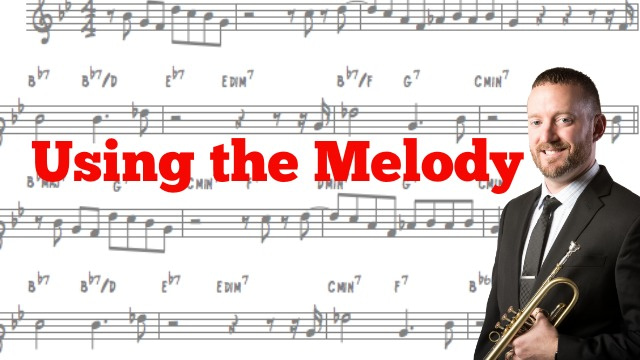Improv Tip Week #23-Let It Breathe
If this is your first time visiting this blog, I wanted to say welcome and invite you to check out the past posts in this blog. For those that are returning-welcome back to Week #23 where we’re going to talk about Let It Breathe. This week’s tip doesn’t have any musical examples or any exercises, but is something that I think everyone can find some benefit from.
Sometimes in our pursuit for finding our voice or that perfect line, we as musicians tend to say too much. You hear it a lot at college campuses and at jam sessions. Musicians throw in every thought, lick, line, motif and kitchen sink into one improvisation. Don’t get me wrong, it’s great to have stuff to say. However, in our attempt to sound mature we string line after line without leaving space for the improvisation to breathe. Those that play wind instruments (trumpet, sax, bone, etc) at least have to breathe at some point. But, those shouldn’t be the only places that the improvisation has space. Some of the best musical examples (improvised or written) I can think of have a nice balance of notes AND rests. We have to remember as improvisors that everything we play and don’t play is a part of our improvisation. That space matters and it allows our whole improvisation to breathe.
I recently attended the Trumpet Hang in Denver, CO this last weekend and one of the clinics presented by trumpeter Bob Montgomery was on the topic of conversation in improvisation. The driving point behind Mr. Montgomery’s advice was that our improvisations are not one way conversations. You make a statement (a sentence), pause for reaction from either the audience or rhythm section and then make another statement. Unless you’re doing a solo gig, you’re not the only one playing on the stage! Everything that happens within an improvisation (solo) is a part of that improvisation. What the rhythm section plays in your space gives you options on where you could go. If we think of making statements and pausing (or waiting for reaction) before making another statement, we allow the music to breathe and create a more organic improvisation that goes beyond our practice routine of playing with backing tracks.
Personally, I would rather hear an improvisation that breathed a little and had interaction from everyone in the band over hearing a soloist play non-stop as if they were the only one present. I’m not saying that busy is bad (there’s an appropriate time for it), but not ALL the time. Let the music breathe every once in a while and let the interaction between you and the rhythm section take you in a new direction. You’ll be surprised at what might happen!
I hope you’ve enjoyed this week’s tip and would love to hear from you! If you’ve got suggestions on how you would let the music breathe, leave a comment here. Also, share this tip (and blog) with your friends and colleagues via Facebook, Twitter, LinkedIn, Google+ or any other site that you’re a contributor. It’s great to hear from all of you and I’m always glad to hear from new friends in other countries! Finally, if you haven’t checked out Targeting: Improvisation With Purpose yet, be sure to click the link on the right or go to Jason Klobnak Music for more information. There are some new reviews up and there will be a short video coming soon from the clinic I did at Drake University in October! Have a great week!
[youtube http://www.youtube.com/watch?v=50L4H3FYORQ&w=420&h=315]




Hey Jason,
I hear where you are coming from on this one! I actually just did a post about this same topic but from a drummers perspective on my blog. Here is the link: http://haredrums.blogspot.com/2011/11/space-final-frontier.html
This is one of the most important AND most overlooked elements of improvisation on any instrument. Thanks for the contribution.
Hey Andrew,
Thanks for sharing your blog…it’s great to get perspective from other instruments and share ideas! I agree, this is one of the areas that’s greaty overlooked and something you don’t hear people talk about very much.